|
...Architect to the Stars |
|
|
|
Paul Revere Williams was a celebrated architect and an
African-American. During his career that combination
just didn't seem possible. But he defied convention and
became one of the most important and influential designers in
Los Angeles. After becoming a licensed architect
in 1921, a year later at 28, he started his own firm. By
this time he was also a member of Los Angeles's first City
Planning Commission. In 1923, Williams joined the
Southern California chapter of the American Institute of
Architects (AIA), becoming the first African-American member
of the national organization. He would later become the
first African-American elected to the AIA college of Fellows. |
 |
|
|
|
|
Williams designed houses in some of the finest areas of Los
Angeles, including Beverly Hills, Bel Air, Pacific Palisades,
Hancock Park, Pasadena, and San Marino. And these were
the very neighborhoods in which he wouldn't have been allowed
to live in at the time. |
|
|
|
“He went a long way toward defining what style was for Los
Angeles.” |
|
|
|
|
|
Click on small photos to see enlargements |
|
|
|
|
|
Some homes of the Stars... |
|
|
|
By the end of the ‘20s, Williams had established a reputation
as "a skilled and sophisticated designer for the upper middle
class and the wealthy". Los Angeles was growing and the
Hollywood area was full of newly rich talent who wanted to
build nice homes. There wasn't enough money in these
small commissions
for the major architects around town, but Williams took them. And
because of his keen sense of design and proportion, he
broke the color barrier of his day. Below are some
of his designs for the
stars of Hollywood.
He was on his way to becoming "...architect to the stars".
You may not remember the names of some of the original owners
but these homes are still in great demand by the new generation of
stars. |
|
|
|
|
 |
 |
 |
 |
|
Lucille Ball-Dezi Arnaz |
Connie Stevens |
Zazu
Pitts |
Debra Messing |
|
|
|
|
|
 |
 |
 |
 |
| Betty
Grable |
Bill
"Bojangles" Robinson |
Barbara Stanwyck |
Grace Moore |
|
|
|
|
|
|
|
|
|
|
|
|
|
 |
Paul Revere Williams was born in Los
Angeles in 1894 soon after his family had moved there. Paul's father died of TB when he was
two, and his mother died of the same disease two years
later. Paul and his brother, Chester, were split up and
adopted. Paul's foster mother, Mrs. Clarkson, encouraged his ability in
art.
He
studied at the Los Angeles School of Art and Design and at
the LA branch of the New York Beaux-Arts Institute of
Design Atelier, and went on to study architecture at the
University of Southern California, in spite of the many
people who told him that an African-American wouldn't make
it in that field. |
|
|
|
|
Williams became a master of design, room arrangement,
engineering, landscape, period architecture and more
importantly, human behavior - the total package.
He
was prolific and designs flowed from his drawing board for
those elegant mansions, modest tract houses, apartments,
hospitals, schools, hotels, churches, private clubs, public
housing projects, department stores, funeral homes and even
car dealerships. Although he was renowned for masterful
interpretations of the Georgian and Colonial American styles,
he proved to be even more masterful at working in a diverse
range of styles, moving effortlessly between period revivals
and into sleek Modernist designs of the postwar era. |
|
|
 |
 |
 |
 |
 |
 |
| |
1943
Poster |
Portrait |
Granddaughter's Book |
Della and Paul |
Williams Crypt |
|
|
|
 |
Paul Williams was a family man. He didn’t
socialize with clients or bring work home. Home was the
two-story California Modern he built in an integrated
suburb called Lafayette Square. And once home, he
rarely discussed his dazzling clientele. Weekends were
for his wife Della (whom he had married in 1917), their
two daughters and four grandchildren, to cook out in the
back yard or experiment with new restaurants. On
grandkid still lives in the family home. |
 |
|
|
|
 |
One of Williams’ many talents was his learned ability to draw
upside down, allowing clients to see what was unfolding
without having to constantly shift the position of the paper
and interrupt the design process. It also was a means to
work with white clients who would be more comfortable
sitting across from a black man rather than sitting next
to him as he made revisions. This type of skill helped
elevate him above the crowd.
Original Paul Williams drawings are scarce because his office records were
destroyed by fire in the 1992 Los Angeles Riots. |
|
|
|
|
|
 |
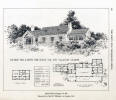 |
 |
 |
 |
|
Drawing |
Drawing |
Drawing |
Drawing |
Drawing |
|
|
|
|
|
|
|
|
Paul Williams Memphis
Connection |
|
|
|
|
|
Paul's father, Chester Stanley Williams and his mother Lila
lived in Memphis. Chester worked at the old Peabody
Hotel on Main Street, as either a waiter or a porter.
His brother Chester was born in Memphis. The Williams family
moved to Los Angeles in 1894 and Paul was born shortly
afterwards. Years later when Paul was
becoming an established architect, he designed a Los Angeles
home for actor-comedian Danny Thomas. And when Danny began to dream of
building St. Jude's in Memphis, he wanted Williams to design it
- and Paul Williams did design it - at no charge.
The hospital was dedicated in 1962 during weeklong
celebrations. On the tenth anniversary of the hospital’s
opening Paul R. Williams was honored at a gala dinner in
Memphis for his contributions to the hospital. The St.
Jude Project had been one of his last public commissions.
He retired a few years later and died in 1980 at the age of
85.
|
|
|
 |
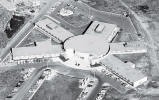 |
 |
 |
 |
|
Williams-Thomas |
St. Jude's |
St. Jude's
|
Williams |
Dedication |
|
|
|
 |
<
PAUL REVERE WILLIAMS - A Man and His Work:
Although Paul Williams career was realized largely in
California, Memphis celebrates a connection. In
2006, the Art Museum at the University of Memphis, AIA
Memphis, Memphis NOMA, the University of Memphis
Benjamin F. Hooks Institute for Social Change, and
Departments of Art and Architecture, began collaboration
on a multi-faceted project to bring Williams’ career
back into focus. Their mission is to increase
knowledge about his work by encouraging scholarship,
presenting exhibitions and publishing new research about
his career. |
|
|
|
|
"The
Paul R. Williams Project is a collaboration of individuals and
organizations in which AIA Memphis and the University of
Memphis are the core institutions. The project began in early
2006 as an initiative of the Memphis chapter of the American
Institute of Architects (AIA) in honor of the 150th
anniversary of the AIA. The Memphis AIA 150 Committee
developed two ideas, the first was a permanent downtown design
center; the second was an exhibition or some form of public
recognition of the life and work of Paul R. Williams
(1894–1980), the first African American member of the AIA and
the first to become a Fellow (FAIA).
The Paul R. Williams Project committee’s motivation was and is
to help expand public knowledge about this American architect,
whose extraordinary accomplishment was achieved against a
background of pervasive racism in a particularly exclusionary
profession."
www.paulrwilliamsproject.org |
|
|
|
|
|
|
|
Paul
Williams Residential Architecture |
|
|
|
|
|
Paul
Williams designed over 3,000 homes and they're scattered all over the Los Angeles area.
They are highly prized - not only because
of their history but because of their very comfortable and
well-designed style. Williams was amazing in that he
could design in all styles of architecture.
He designed homes
that incorporated features of English Tudor, French Norman,
Spanish Colonial, Italianate, Georgian, and Regency.
And he was a master at all of them.
|
|
|
 |
<
A notable
Williams design was used for exterior scenes of
the Clampett mansion on television’s “The Beverly
Hillbillies”.
Many of the homes below would originally have been
designed for stars or the wealthy of Los Angeles.
These properties continue to be purchased by the stars of
today - often in private sales. It has become a
major status symbol to live in a "Paul Williams home". |
|
Beverly Hills |
|
|
|
|
 |
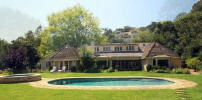 |
 |
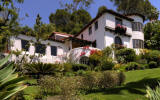 |
|
Pasadena
Home |
Pasadena Home |
Pasadena Home |
Los Feliz 1927 |
|
|
|
|
|
|
|
|
|
|
|
|
|
|
|
|
|
 |
 |
 |
 |
|
Beverly Hills |
- |
Silverlake |
- |
|
|
|
|
|
 |
 |
 |
 |
|
- |
Paley Residence |
- |
Holmby Hills, 1946 |
|
|
|
|
|
 |
 |
 |
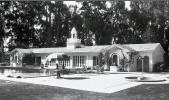 |
|
Palm Springs |
Beverly Hills |
Windsor Square |
Beverly Hills 1931 |
|
|
|
|
|
 |
 |
 |
 |
|
Beverly Hills 1924
|
Glendale |
Hancock Park 1932 |
Holmby Hills 1944 |
|
|
|
|
|
|
|
|
Paul Williams Commercial
Architecture |
|
|
|
|
|
Paul
Williams most famous commercial building is the Theme Building
at Los Angeles International Airport.
He often worked with groups of
architects to design some buildings and helped design the Los Angeles Federal
Office Building, the
Kenneth Hahn Hall of Administration and the Stanley Mosk
Courthouse for the County of Los Angeles. Williams
was particularly noted for his designs of building interiors.
Frequently when a building was being renovated, he was much
sought after to "re-design" the building. He also
designed government buildings in Mexico and Colombia.
In a career spanning 50 years and some 3,000 projects,
Williams perfected a style at once elegant and relaxed, one
that helped shape the California Southland when it was still
emerging from the orange groves. |
|
|
|
|
|
|
|
|
|
|
 |
 |
 |
 |
|
Angelus Funeral Home |
First...Church |
La Concha Motel -Las
Vegas |
Franz Hall - UCLA |
|
|
|
|
|
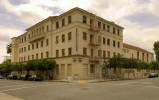 |
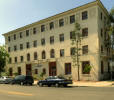 |
 |
 |
|
YMCA - Los Angeles |
YMCA - Hollywood |
Music Corp of America |
Sunset Plaza
Apartments |
|
|
|
|
|
|
|
|
|
|
|
 |
 |
 |
 |
 |
|
Santa Monica 1928
|
- |
Hotel Nutibara-1945 |
Kelly Music 1930 |
Golden State Ins. 1949 |
|
|
|
|
|
|
|